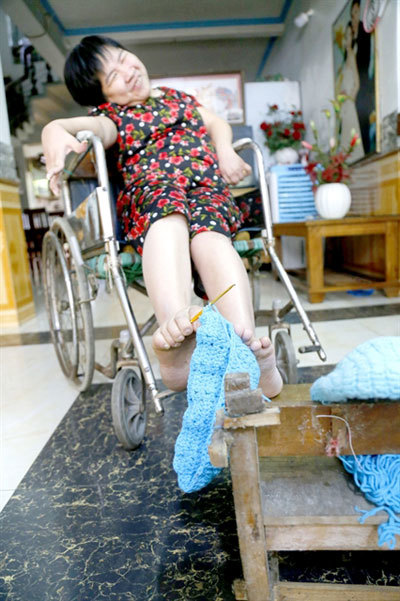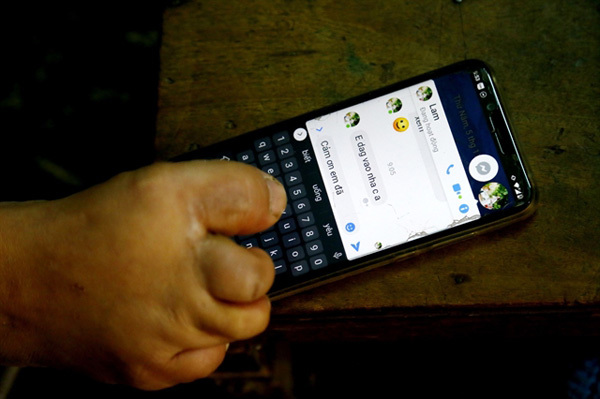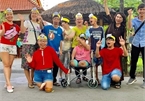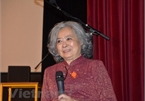 |
| Hoang Lan Huong learns how to knit by her feet. She is paralysed as a consequence of war, but always leads to a meaningful life. — VNA/VNS Photo Nam Suong |
The only body part she can control is her feet and although she has to use a wheelchair, she hasn't lost her optimism.
Huong is learning how to write and read, to draw pictures, plant flowers, knit and even use a smartphone by herself.
Trinh Thi Mui, Huong’s mother, said she gave birth to her in 1977. She was a cute and healthy baby girl.
However, she didn’t grow up much and was still the size of a three-month-baby when she turned one.
The couple took the baby to the hospital for health a check-up and were informed that the Huong was suffering from exposure to Agent Orange.
Due to her weak health, Huong spent most of her time in her house in Minh Xuan Ward in northern Tuyen Quang Province. She couldn’t speak well, found it hard to communicate and couldn’t move much.
Mui thought her daughter would live like that for the rest of her life, but Huong had other ideas.
At the age of 10, Huong was able to write on paper by herself.
“We went to the bedroom and saw her write with her feet. There were her names, her age, our names, our ages. They were clear and easy to read,” Mui said.
Mui and her husband couldn’t hold back their tears of happiness.
“She learnt it by herself. She learnt it when we helped the children with their studies.”
Hoang Chat Luong, Huong’s father, said he used to be a soldier and had been exposed to toxic chemicals sprayed by the US during the war.
Huong is paralysed as a consequence of war.
 |
| She can use a smartphone and creates her own Facebook account to socialise with people. |
Since the day Huong showed her ability to write, Luong has spent part of his monthly allowance to buy books, newspapers, paper and pens for her to study.
Huong became more self-confident and cheerful and started learning how to knit clothes for her mother and younger brother. She also studied how to embroider.
Her biggest embroidery painting is more than a metre long and features a landscape of mountains. She has also learned how to draw pictures and paints the faces of her parents, children and herself.
Mui said Huong was sometimes so passionate for the work that her legs cramped up, but she would insist on finishing.
Huong has also learned to socialist. She can use the computer, write emails, surf the web and creates her own channels to guide people on how to knit or embroider.
She posts photos of her products on Facebook and her paintings, woollen hats and flowers made from vegetables and fruits have received a lot of support from internet users.
Huong gives a large number of her products to donate to disadvantaged children in remote areas. On each photo, Huong writes sentences to encourage people and herself to overcome difficulties and lead a meaningful life.
Vu Viet Lan, head of Hanoi-Sai Gon Volunteering Group, said Huong gave woollen hats that she made to donate to children in mountainous areas in Tuyen Quang, Ha Giang and Lang Son provinces.
This was a special gift to the children as they were made by a special person who always willed herself to overcome the pain of Agent Orange and have a meaningful life, she said. VNS

Light at end of the tunnel for Agent Orange victims
It was on August 10, 1961, that the US military first sprayed Agent Orange in Vietnam. 58 years have passed, yet the tragic legacy left behind by the toxic defoliant remains indelible.

French court to hold trial on AO lawsuit on October 12
President of the Vietnam Association of Victims of AO/dioxin (VAVA) Nguyen Van Rinh has sent a letter expressing support for Vietnamese-French Tran Thi To Nga